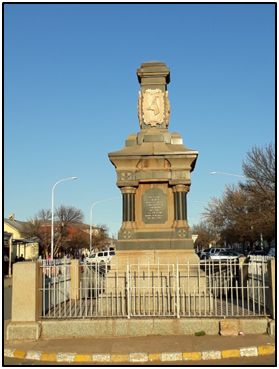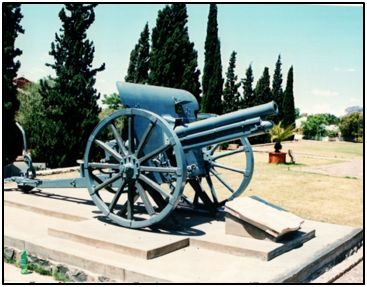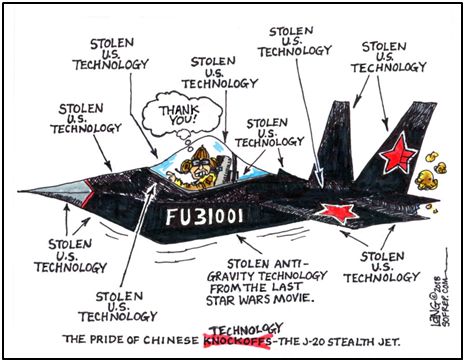


Newsletter/Nuusbrief 168
September 2018
The August meeting took place on the 13th at the usual venue in Port Elizabeth.
The members’ slot was used by Andre Crozier to give a short slide presentation on the recent field trip to the north-eastern Cape. See the report below.
The curtain raiser was given by Gerda Coetzee on Die Ystervrou agter die Generaal: Nonnie de la Rey. Gerda provided the following summary which is the abstract from a 2003 Master’s thesis, Nonnie de la Rey 1856 – 1923, by Zelda Rowan done at the University of Pretoria. The full thesis may be viewed at:
https://repository.up.ac.za/handle/2263/28626
In her lifetime Jacoba Elizabeth (Nonnie) de la Rey, née Greeff (1856-1923) was widely known not only for being the wife of the eminent General Koos de la Rey, but also for her exceptional tenacity during the Second Anglo-Boer War (1899-1902). From December 1900 to the conclusion of the war in May 1902 she and her children lived a nomadic life. Nonnie's experiences were recorded in her memoirs, Mijne omzwervingen en beproevingen gedurende den oorlog, which were published in Amsterdam in 1903. Shortly thereafter – also in 1903 – the English edition, A woman's wanderings and trials during the Anglo-Boer War, as translated by Lucy Hotz, was published in London. The 18 months that Nonnie spent wandering through the country probably constitute the most important phase of her life, but she experienced a great deal more, which she recorded in another memoir.
Her childhood and pioneer's life are well documented. At the age of eighteen Nonnie met Jacobus Herculaas de la Rey; they were married on 24 October 1876 and settled in the vicinity of Lichtenburg.
The period from 1880 to 1899 constitute a kaleidoscope of events in Nonnie's life, for example the First Anglo-Boer War (1880-1881), the loss of Nonnie's father and mother, and a move to the farm Elandsfontein. The Anglo-Boer War broke out in 1899. Nonnie's life during the war years can be divided into two phases, namely the period when she lived in Lichtenburg (October 1899 to November 1900), and the period characterised as her wandering years (December 1900 to May 1902).
Events in Nonnie de la Rey's life from 1902 to 1923 include their official visit to Europe, the restoration of Elandsfontein, Union (1910) and Koos de la Rey's political involvement, the Rebellion of 1914 and the death of Koos de la Rey. In her final years Nonnie was involved with various organisations. She was an eminent presence in her community, being revered as a ‘volksmoeder’ by her compatriots. She died in 1923.
The main lecture,titled Does the Band Play On? was by Melanie Hillebrand on her service as a bandswoman in the Natal Carbineers from 1978 to 1983. The band featured prominently in both the regimental and social life in Pietermaritzburg. Performances at concerts in city parks, exercising Freedom of Entry to various towns and cities, regimental and civic dinners and Remembrance Services were common features of service in the Band. Melanie’s band service included being involved in the making of films of the Anglo-Zulu War Zulu (1964) and Zulu Dawn (1977)and the centenary commemoration of the Battle of Isandhlwana. The lively insights she gave of some of the colourful musicians in the band and the leading role that many of them played in the city were well received by the audience.
Report on the SAMHSEC field trip which took place from Friday 3rd to Sunday 5th August.
Twenty-four members of the Society and their guests convened at Cradock on Friday morning. The first place visited was the Cradock cemetery where Steven Mullineux led a guided walk to military and military associated graves. From there the tour proceeded to the beautiful NG Moederkerk in Stockenström Street,where we were addressed by Wilna de Klerk on the history of the church building and the NG congregation. The group split up for lunch; some visiting the Cradock Club where several fascinating items of military interest could be viewed. Before leaving the town we visited the Cradock War Memorial, now within the extended Spar complex. Regrettably the 40mm Bofors LAA Gun, which was part of the memorial, is no longer with it. The best information that could be obtained on the spot is that this publicly owned artefact is now in ‘someone’s back yard’.
The group moved to Tarkastad, where the well conserved war memorial and the cemetery were visited and symbolic poppies were placed upon all the military graves. We moved to Blanco Guest Farm, where a convivial evening and comfortable night were spent.

Tarkastad War Memorial.
Photo: Anne Irwin
Early on Saturday morning, we met our guide for the day, Marie Pretorius, in Molteno and visited the cemetery where several casualties of the Anglo-Boer War are interred. From there we proceeded to Vegkoppies Farm, the site of the Battle of Stormberg and to the Stormberg Blockhouse, where we had lunch at the Plaaskombuis. The group returned to Blanco for the night where wine and supper were enjoyed in fine company.
On Sunday morning we travelled through the Baviaans Valley to look at sites relevant to the 1820 Settlers Scottish Party and the Eildon Church, where Thomas Pringle’s remains are interred. Finally we visited sites relating to the Slagtersnek Uprising and hence to home. The tour,during which the rich military history of the north-eastern Cape was blended with thoroughly pleasant social bonding of our members, was a great success. Much appreciation was expressed to Malcolm Kinghorn and Ian Pringle who put it together.
Future meetings and field trips/ Toekomstige byeenkoms en uitstappe
The next regular meeting will be on Monday 10th September at 19h30 at the Eastern Cape Veteran Cape Car Club in Conyngham Road, Port Elizabeth. While the curtain raiser has not yet been finalised, the main lecture will be by Jenny Laws on The History and work of the SAPS Air Wing.
Matters of general interest / Sake van algemene belang
New member
SAMHSEC welcomes Doug Walters back to the Society. We hope it will be a fulfilling and happy experience. We hope to see you and Sue on future field trips, and at regular meetings when you can manage it.
Jonathan Ossher offered the following interesting contribution:
Starting in 1940, an increasing number of British and Canadian Airmen found themselves as the involuntary guests of the Third Reich, and the Crown was casting about for ways and means to facilitate their escape. Now obviously, one of the most helpful aids to that end is a useful and accurate map, one showing not only where stuff was, but also showing the locations of 'safe houses' where a POW on-the-run could go for food and shelter.
Paper maps had some real drawbacks – they make a lot of noise when you open and fold them, they wear out rapidly, and if they get wet, they turn into mush. Someone in MI-5 (similar to America’s OSS) got the idea of printing escape maps on silk. It's durable, can be scrunched-up into tiny wads, be unfolded as many times as needed, and makes no noise whatsoever. At that time, there was only one manufacturer in Great Britain that had perfected the technology of printing on silk, and that was John Waddington Ltd. When approached by the government, the firm was only too happy to do its bit for the war effort. By pure coincidence, Waddington was also the U.K. Licensee for the board game Monopoly. As it happened, 'games and pastimes' was a category of item qualified for insertion into CARE packages, dispatched by the International Red Cross to prisoners of war.
Under the strictest of secrecy, in a securely guarded and inaccessible old workshop on the grounds of Waddington's, a group of sworn-to-secrecy employees began mass-producing escape maps, keyed to each region of Germany, Italy, France, or wherever Allied POW camps were located. When processed, these maps could be folded into such tiny dots that they would actually fit inside a Monopoly playing piece.
As long as they were at it, the clever workmen at Waddington's also managed to add:
Of the estimated 35,000 Allied POWS who successfully escaped, an estimated one-third were aided in their flight by the rigged Monopoly sets. Everyone who did so was sworn to secrecy indefinitely, since the British Government might want to use this highly successful ruse in still another, future war. The story wasn't declassified until 2007, when the surviving craftsmen from Waddington's, as well as the firm itself, were finally honored in a public ceremony.
It's always nice when you can play that 'Get out of Jail' Free' card!
World War I Centenary Years / Eerste Wêreldoorlog Eeufeesjare
Major engagements in September 2018
On the Western Front the German Army continued its orderly, but steady, retreat; much of the Reich’s leadership now accepting that the Central Powers could no longer win the war. Among the Alliesthere was a growing perception of a decline in the fighting will of the German armies. Increasing numbers of German troops were being taken prisoner and the Spanish ‘Flu had exacerbated the Deutsches Heer manpower problems to a proportionally greater extent than was the case with the Allies. To add to this, there was social unrest in the German homeland and Germany’s allies were in a state of immanent collapse.
During September three relatively small but successful battles were fought by the British, Americans and French. The first was the British success at the Battle of Havrincourt on 12th September. This coincided with the victory of the Joint American-French Attack at St Mihiel from 12th-15th September. These successful encounters were followed by the Battle of Epehy on 18th September, a combined effort between British and French forces.
On the Palestine Front, the Battle of Square Hill, of singular importance to South Africans, took place on 18th-19th September. It was part of the general retreat of the Turkish forces in the face of a combined Commonwealth drive, amongst which was the Cape Corp. The courageous and successful action of storming the Hill and related strongpoints by the Corp earned them high praise and an array of awards for gallantry. No fewer than five Distinguished Conduct Medals (DCMs), a Military Cross, a Military Medal, four Mentions in Dispatch and a battlefield promotion were awarded. Established by Queen Victoria in 1854, the DCM was the oldest British gallantry medal at the time, and second only to the VC in status. During the action, 200 prisoners and a gun were captured; the gun now standing at as a monument to the Cape Corps in Kimberley. Further details of this action, as well as for the subsequent one at KhJibeit on 20th September, where the Cape Corps suffered severe losses, can be found at the following sources:
Jordan Moses L/Cpl 2008 ‘A brief account of the 1st Cape Corps’ fight at Square Hill, 18 to 21 September 1918’ Military History Journal 14 (3) 118 L/Cpl Jordan was a participant in the battle.
Sinclair Alan 2014 ‘Commemoration Service 2014: 1st Battalion Cape Corp at the Battle of Square Hill’ Military History Journal 16 (4) 125-126
Engelbrecht Leon 2010 ‘Remembering Square Hill –the Cape Corp at Megiddo, September 1918’
Defence Web 15th August 2018
http://www.defenceweb.co.za/index.php?option=com_content&view=article&id=9689:remembering-square-hill-the-cap-corps-at-megiddo-september-1918-&catid=50:Land&Itemid=105
Difford Ivor D (Capt) u/d [c1920?] The story of the 1st Battalion Cape Corps (1915 – 1919) Cape Town Hortors Chapter 15 (pp 188-236) covers Square Hill and the capture of the guns.
http://www.sahistory.org.za/sites/default/files/difford_id_the_story_of_the_1st_cape_corps_1915_-_1919.pdf

Cape Corps (Square Hill) Memorial, Kimberley.
This German gun,a 7.7cm FK M16, was captured from the (Ottoman) Turkish Army by the Cape Corp at the Battle of Square Hill in Palestine, on the night of 18/19 September 1918. The gun was captured after a section of the CC machine gunners deployed on the flank to provide fire support had seen the Turkish crew beating a hasty retreat with the gun, and cut them off. This field gun, one of the first to be seized during the advance, was presented to the unit as a trophy for the part they had played in the key battle.
Photo: Pat Irwin
One minor naval encounter, known as the Action of 5th September 1918, took place some 320km off the coast of France. An American troopship, the USS Mt Vernon (formerly the German ocean liner, Kronprinzessin Cecilie, which had been interned earlier in the war)accompanied by four destroyers, was heading west across the Atlantic when she was torpedoed by the U82. In the ensuing depth-charge attack by the destroyers, U82 was presumed sunk, but in fact slipped away unscathed to continue her mission. The Mt Vernon was able to effect temporary repairs and returned to Brest under her own steam, with the loss of only 36 killed and 13 wounded out of 1450 people aboard.
Websites of interest/Webwerwe van belang
Black Tot Day [in the Royal Navy]
Wikipedia 9th June 2018
https://en.wikipedia.org/wiki/Black_Tot_Day
World War I
The Scottish island that buried America's dead
Glenn Campbell BBC Scotland 1st May 2018
https://www.bbc.co.uk/news/uk-scotland-43948079
World War II
D-Day: Infrared photos reveal WW2 bunkers in new light
Lynda Laird BBC News 5th June 2018
https://www.bbc.co.uk/news/in-pictures-44355571
Dale Wilson: Island-hopping to Australia[WWII in the Pacific]
Joy Neal Kidney Blog 7th August 2018
https://joynealkidney.com/2018/08/06/dale-wilson-island-hopping-to-australia/comment-page-1/#comment-320
Cold War and post-Cold war
How the CIA found a Soviet sub — without the Soviets knowing
Greg Myre Parallels 18th September 2017
https://www.npr.org/sections/parallels/2017/09/18/549535352/how-the-cia-found-a-soviet-sub-without-the-soviets-knowing
The day North Korea fired a missile at SR 71 Blackbird
Joris Nieuwint War History Online 14th January 2018
https://www.warhistoryonline.com/whotube-2/missile-at-sr-71-blackbird.html
All the nuclear missile submarines in the world in one chart: Only seven countries deploy nuclear weapons at sea, an exclusive and deadly club.
Dimitrios Mitsopoulos Popular Mechanics 8th June 2018
https://www.popularmechanics.com/military/navy-ships/a21204892/nuclear-missile-submarines-chart/
Spooks and Spies
1600 year old mosaic shows Biblical spies who scouted the promised land
Laura Geggel Live Science 11th July 2018
https://www.livescience.com/63029-israel-mosaics-two-spies.html
Resource materials of military historical interest/ Bronmaterieel van krygsgeskiedkundigebelang
ONLINE RESOURCES
A story of heart-warming compassion and decency: Maharaja Digvijaysinhji Ranjitsinhji Jadeja of Nawanagar’s rescue of, and sanctuary for, Polish woman and children fleeing the Nazis.
Articles and videos can be accessed at:
https://www.google.com/search?q=Polish+WWII+refugees+in+India&ie=utf-8&oe=utf-8&client=firefox-b-ab
Members are invited to send in to the scribes, short reviews of, or comments on, books, DVDs or any other interesting resources they have come across, as well as news on individual member’s activities. In this Newsletter, there have been contributions by Barry Irwin, Malcolm Kinghorn, Jonathan Ossher, Michael Irwin.
| Chairman: | Malcolm Kinghorn | culturev@lantic.net |
| Secretary: | Franco Cilliers | Cilliers.franco@gmail.com |
| Scribes: | Anne and Pat Irwin | p.irwin@ru.ac.za |
TAILPIECE:

An American view of Chinese military technology:
Source: C. Danielle Bizier 6th November 2018
https://sofrep.com/104447/stay-tooned-if-you-cant-make-it-steal-it/